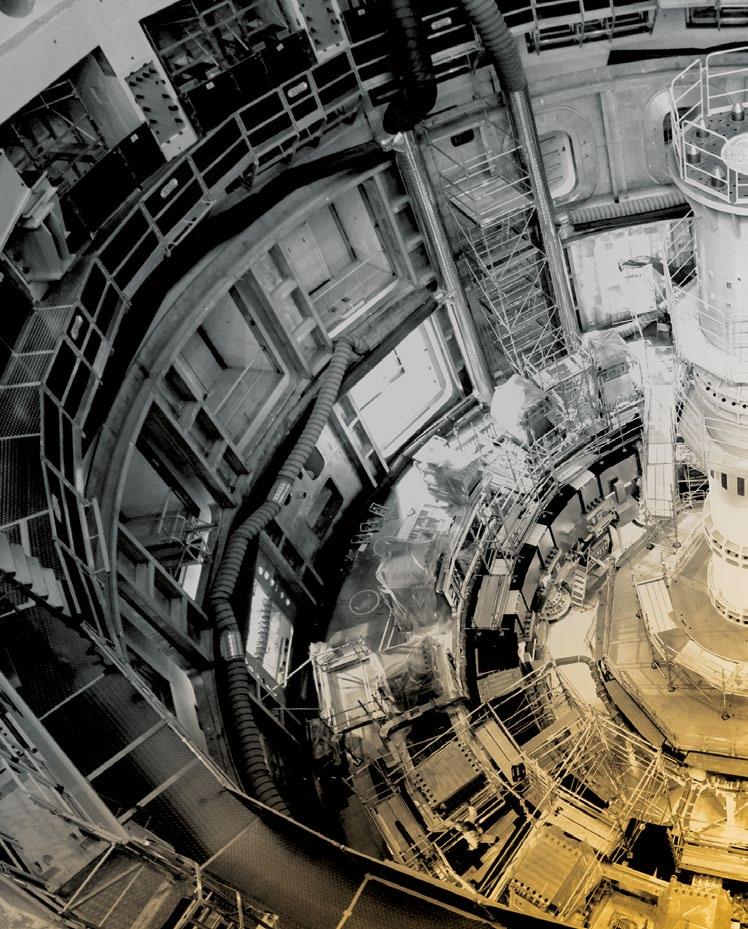
7 minute read
Corporate Highlights
AT A GLANCE 2021
JANUARY
Advertisement
• ITER continues its “New Normal” work policy in 2021 balancing on-site presence with telework
APRIL
• First ITER magnet—poloidal field coil #6—installed •1,200 participate in the Remote ITER Business Meeting
MAY
• ITER co-hosts the 28th IAEA Fusion Energy Conference (remote)
JUNE
• 28th Meeting of the ITER Council (remote) • ITER Robots competition, 10th edition
SEPTEMBER
• Kadri Simson, European Commissioner for Energy, visits ITER • Alignment achieved on first vacuum vessel sector sub-assembly • The ITER Project is represented at the International Atomic Energy Agency’s General Conference • Safety Day: staff and construction personnel commit to “Safety First”
OCTOBER
• Virtual Open Doors Day • Transfer of platform coordination responsibility from the European Domestic Agency to the ITER Organization
NOVEMBER
• 29th Meeting of the ITER Council (remote) • ITER co-hosts “Looking to the Future with Fusion Energy” at COP-26 (UK) • ITER participates in the World Nuclear Exhibition (France)
DECEMBER
• ITER Organization 2021 Achievement Awards • 63 ITER Council milestones achieved since 2016 (5 in 2021) • ITER Organization staffing passes 1,000 for the first time
Machine construction has been underway since May 2020 in the Tokamak pit, a 30-metre-wide, 30-metre-tall “well” inside of the Tokamak Building.
2021
CORPORATE HIGHLIGHTS
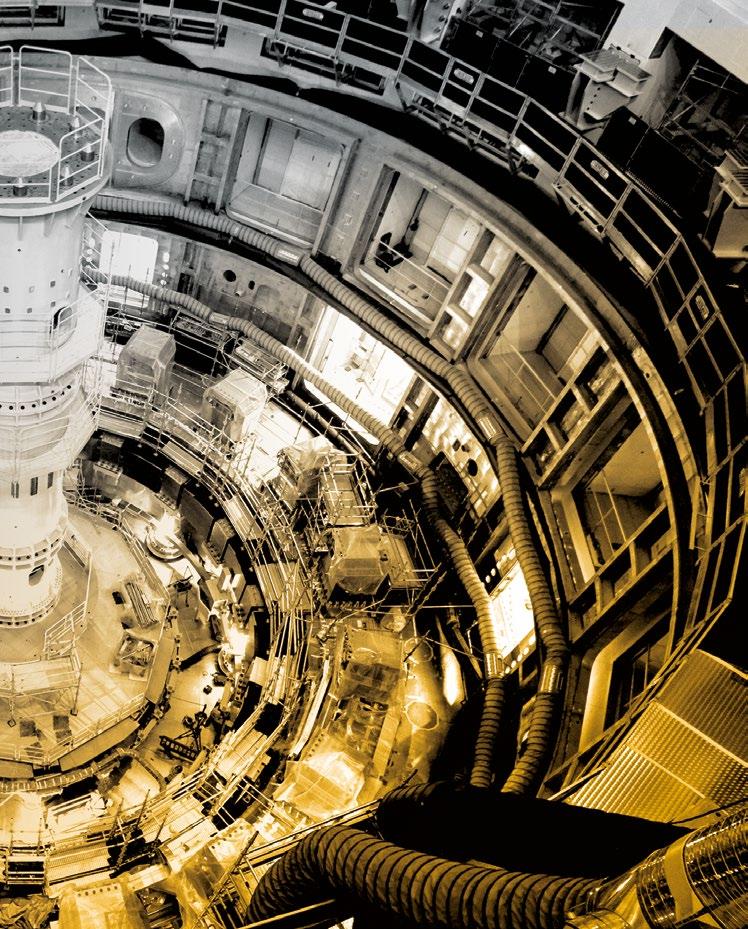
CORPORATE HIGHLIGHTS 2021
Against the backdrop of year two of the Covid-19 pandemic, the ITER Organization and the Domestic Agencies kept the project on its forward-moving trajectory—achieving key manufacturing and assembly milestones and gaining significant experience in the preparation of major components for installation in the machine pit. However, challenges reported in the manufacturing of some critical-path components, compounded by pandemic-related supply chain issues, are pushing back expected delivery dates and affecting the schedule for machine assembly. In 2022, the ITER Organization will complete an assessment of these delays and present a Baseline Update to the ITER Council. To date, the project has executed 75.8% of the work scope to First Plasma and achieved 63 highlevel ITER Council milestones.
Covid-19 – On site at ITER, the continuity plan in operation since the start of the pandemic in France has been effective in maintaining critical-path assembly and installation work. For ITER manufacturing worldwide, the pandemic’s effect on the industry and transportation sectors has translated to periods of partial or full shutdown in factories, delay in new contractor mobilization, reduction in the travel of experts and inspectors, difficulties in organizing maritime transport (especially for highly exceptional loads), and congestion at the loading and off-loading harbours. The ITER Organization and the seven Domestic Agencies are coordinating closely to offset the resulting delay in the delivery of components, with the understanding that some of the delay is incompressible. Project progress will continue to be measured against the Baseline 2016 schedule until the full impact of the Covid-19 pandemic can be assessed. Revised construction strategy – As requested by the ITER Council at its twenty-eighth meeting in June 2021, the ITER Organization is working with the Domestic Agencies to prepare an update of Baseline 2016. The re-baselining effort will take into consideration all possible measures to minimize or recover delays to First Plasma, lessons learned and experience from completed first-of-a-kind components and assembly and installation activities, and missing items identified since the last major update to the ITER Baseline. The “fastest technically achievable” project schedule that results from this exercise will be the object of a focused independent review by a panel of project schedule and cost experts before presentation of the proposal to the ITER Council. In parallel, a strategic group has been formed at the ITER Organization to determine the path to ensuring that the start of Fusion Power Operation can be maintained in 2035. The ITER Organization is also working with the Domestic Agencies to identify schedule-saving opportunities in manufacturing and assembly activities.
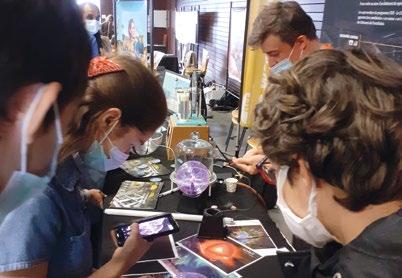
First-of-a-kind components – Many of the first-of-a-kind risks associated with ITER’s major components have been closed following the successful fabrication and delivery of two vacuum vessel sectors (Korea), eleven toroidal field coils (Europe and Japan), two central solenoid modules (United States) and three poloidal field coils (Europe). Successful firsts in the assembly arena are also lowering risks: in 2021, the first vacuum vessel sector sub-assembly was created on specialized tooling in the Assembly Hall within all expected tolerances—a major achievement that encourages confidence in the upcoming assembly of eight other vacuum vessel sections. Additionally, the experience gained across the project is improving the rate of work for next-in-series operations. The second vacuum vessel sector was prepared for assembly tooling in half the time of the first, for example. There was also a twelve-month schedule gain in the production of Europe’s poloidal field coil #2 in relation to the similar-in-size poloidal field coil #5. The project’s critical path continues to depend on the timely delivery of major components, including the vacuum vessel sectors supplied by Europe, and the assembly on site of the sub-components of the plasma chamber. The installation of plant system components in the Tokamak Complex is on the near-critical path.
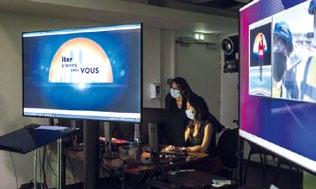
The outreach program picks up again in schools and local venues … with masks.
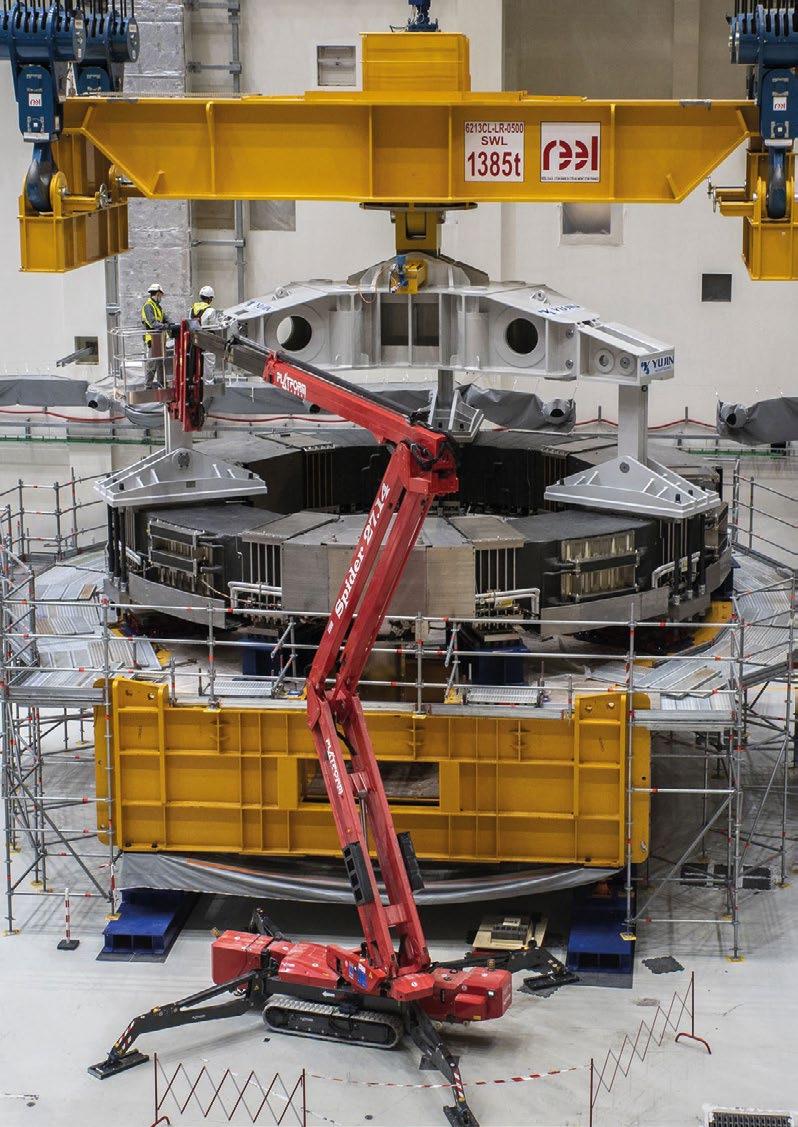
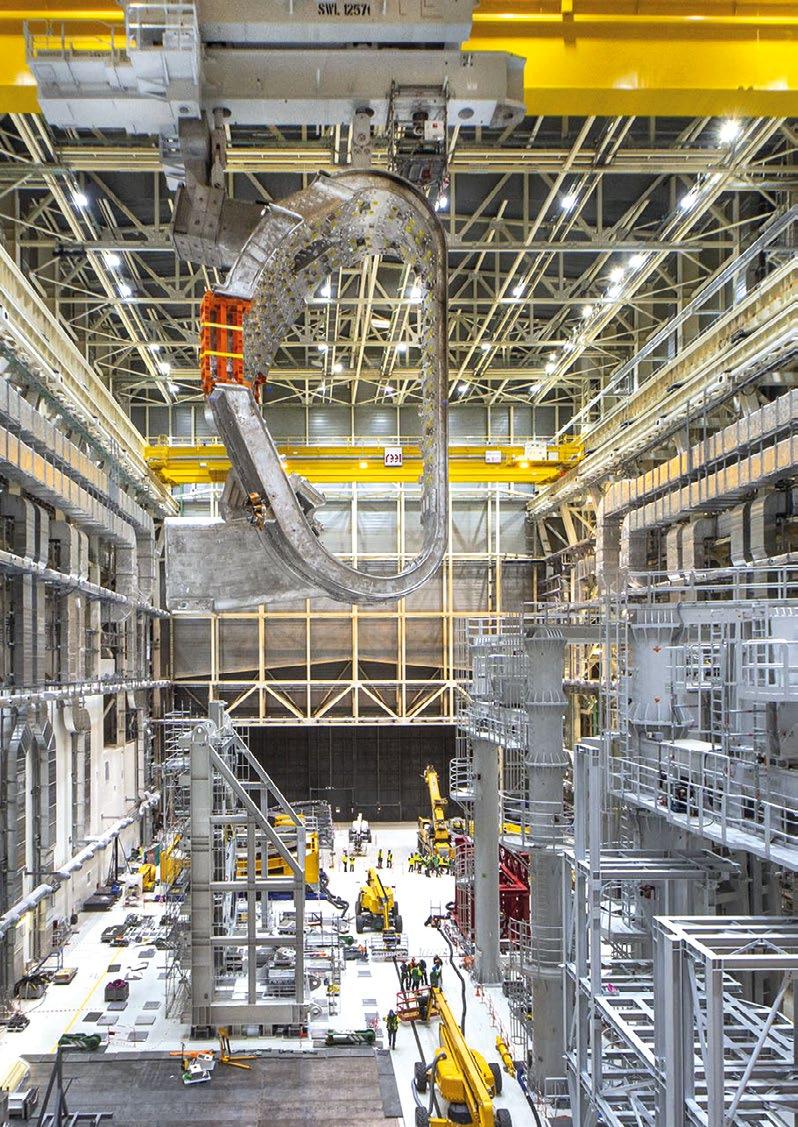
ITER Director-General Bernard Bigot hosts European Union Commissioner for Energy, Kadri Simson, in September.
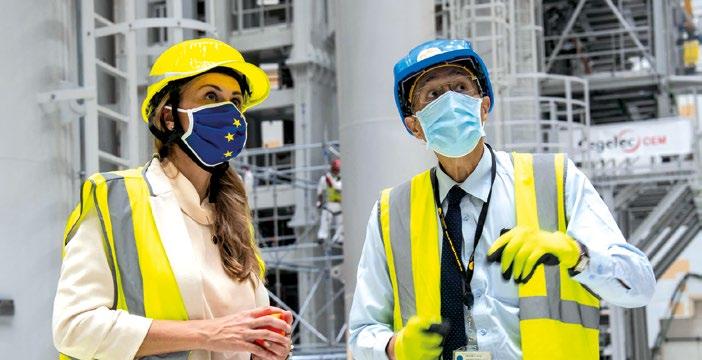
Regulatory environment – As an Installation nucléaire de base (INB)—a nuclear installation under French nuclear safety regulations—the project is required at regular intervals to demonstrate that its safety-relevant buildings, civil structures, systems and components conform to the approved design and meet the safety case in the "as-built" or "as-installed" condition. To oversee these aspects of safety, soon after approving the project design the French nuclear safety authority, Autorité de sûreté nucléaire (ASN), put a series of hold points in place as part of the normal regulatory process. The next hold point for the ITER Project is the start of assembly, defined by the ASN as the moment when the ITER team engages in a machine assembly activity “that would be difficult to reverse,” i.e., the welding together of the first two vacuum vessel sectors in the tokamak pit. Exchanges between the ITER Organization and ASN on ITER’s safety file for the authorization of machine assembly have been frequent since the file was accepted as admissible for further examination in March 2021. The lifting of this hold point in 2022 is critical to beginning the first in-pit welding of the ITER vacuum vessel.
DigITER program – The ITER Organization has prepared a program to increase the progressive digitalization of its engineering processes. In late 2021, after detailed investigation and benchmarking, an internal working group published a roadmap for coordinating and structuring the digital environment of the future engineering processes at ITER by building on the project’s current capabilities. Three digital projects have been given priority status: the digitalization of as-built data acquisition and the construction of 3D models; an increase in the use of virtual and augmented reality for design, validation, control, simulation and training; and the introduction of digital functional tools for the advanced engineering of the Hot Cell Complex (modelcentric orientation, complex configuration management, 4D to 8D management). The DigITER program will be proposed by the ITER Organization in the framework of the 2022 Baseline proposal. Parallel to the DigITER program, corporate processes are also part of the ITER digitalization effort: in 2021, the Procurement & Contracts Division successfully rolled out an electronic tool for tender and contract management.
COP-26 – Fusion energy had a seat at the table for the first time at a United Nations Climate Change Conference in 2021. At the COP-26 in Glasgow, Scotland, the ITER Organization co-hosted a 60-minute panel in the diplomatic Blue Zone on “Looking to the Future with Fusion Energy” with the participation of the Director-General of the ITER Organization and a diverse array of panellists from the global fusion community. Throughout 2021, ITER and other public and private fusion R&D initiatives continued to experience a surge in coverage at prestigious conferences and in the media.
Staffing - As of 31 December 2021, 1,035 people were directly employed by the Organization. Contributions to the project were also made by 11 experts, 6 visiting researchers, 39 interns, and 244 ITER Project Associates (experts from the Members’ scientific, technological, and industrial communities who work at ITER while remaining in the employment of their home institutes). ITER Organization staffing is progressing in step with project resource estimates and projections; in addition, the ITER Council has approved a temporary staff increase of 120 full-time positions beyond the current cap of 1,050 for support to the Revised Construction Strategy to First Plasma. In 2021, the ITER Organization has also received Council endorsement to launch a new postdoctoral program to fill specific positions in relation to ITER’s high priority research needs. Approximately 10 new postdoctoral opportunities in science in engineering will be advertised in 2022.
International cooperation - The ITER Organization maintains a large number of cooperation agreements with the laboratories and educational establishments of the ITER Members (see full list on page 55), international organizations, and non-Member states.




